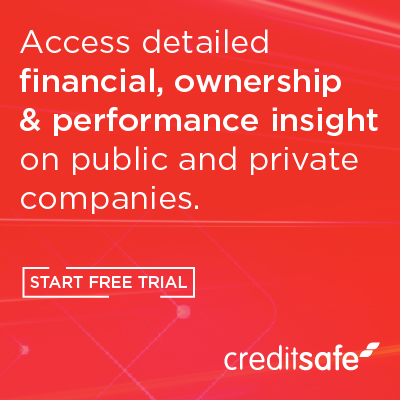When compliance needs to be your company's priority, choosing the right compliance screening tool is key.
Has it felt like we’ve been a bit compliance crazy lately? Recently, we’ve been talking about things like compliance risks your business could face in the new year, regulations your business needs to know about and even reasons your compliance program could fail. I don’t want to sound like a broken record, but there’s a very good reason we’re spending so much time talking about compliance.
We all agree that compliance is an incredibly important part of your business, right? That’s great. But if you manage risk and compliance at your company, you probably have a lot of pressures coming at you from all sides – be it pressure from the leadership team, time constraints leading to short cuts or competitive threats. This is where having the right compliance screening tool can be extremely valuable in building and managing your compliance program so that you aren’t caught off guard by potential violations from your customers or suppliers.
But not all compliance screening tools are created equal. To help, we’ve created a checklist you can use when choosing a compliance screening tool for your business.
Do your customers or suppliers have any potential violations?
1. Make sure the tool covers you from multiple types of compliance violations
One of the most difficult parts of compliance is the fact that there isn’t just one part of compliance to be worried about. Compliance covers multiple areas, like fraud and financial crimes, employment laws, data privacy regulations and government sanctions, to name a few. You could land in hot water for violating the data privacy of your customers just as easily as you could for working with a sanctioned entity. Your business is responsible for compliance throughout your entire supply chain. For example, if one of your suppliers sources materials from a business that uses forced or child labor, your business would be liable because it happened within your global supply chain.
Your compliance screening tool needs to cover all the potential risks your business faces. You should look for a tool that provides alerts about financial crimes, money laundering, sanctions risks and reputational damage. A tool that screens for PEPs (Politically Exposed Persons), legal filings, profiles of interest and adverse media will give you the full picture of your potential customers and suppliers well in advance.
Remember to look into the volume of sources your compliance screening tool is using. It’s one thing to use a tool that checks businesses from one data source, but remember that not all tools are created equal. The best compliance screening tool will verify its data by pulling from a large volume of sources.

2. Make sure the tool is easy to use and streamlines your existing processes
When you introduce new technology to your business, it can come with a learning curve. Depending on the experiences of your team, that curve can feel more like a mountain. You should remember that the point of introducing a compliance screening tool into your processes is to make things easier, not harder.
So, your compliance screening tool needs to be easy to use and show information in a way that’s easily understandable. When you’re looking for a compliance screening tool, think about how it will be used by your employees. Can they quickly sort through a large volume of compliance alerts? Will the alerts be reliable and not include a lot of false positives?
Ideally, your compliance screening software should make it easy to do due diligence on a business in just a few clicks. Rather than using multiple platforms or complicated workflows to perform due diligence, look for a compliance screening tool that simplifies the process.
3. Choose a tool that results in few or no false positives
When you’re deciding who to do business with, there are some things you need to know. For example, you’ll want to know whether a company has a bad habit of not paying their bills on time, or what they’re like to work with overall. But the most important thing to understand before you sign a contract is whether working with a company will harm your business. In compliance, that could mean reputational damage from working with an unethical company, or fines and legal fees that come from working with a sanctioned entity. But what happens if your screening tool shows a compliance alert for one of your customers and gets it wrong?
False positives in compliance can happen for many reasons. With so much information (and such a wide range in data quality) out there, compliance screening tools have a hard time making absolutely sure their results are correct. Sometimes, businesses or people with the same or similar names get mixed up, or innocent transactions can be flagged for things like money laundering and fraud. When your compliance screening tool brings up a false positive, you could be spending valuable time and resources investigating a potential compliance violation that was never actually a problem in the first place.
While it’s usually great to be overly cautious (especially when it comes to compliance), you also want to make sure that your compliance screening tool has the best possible data. That way, you’ll reduce your chances of getting a false positive in a search. Compliance screening tools can do this by making sure their data is always up to date and clean - checking for duplicates, aliases and other information that could potentially confuse the compliance process. Do your research on the data your tool uses – it should be sourced from local authorities and regularly updated.

4. Make sure it's quick and easy to onboard the tool across your company
In our recent research study, 80% of the respondents said they currently use a compliance screening tool that provides regular alerts for potential violations by their customers and suppliers. That’s a great start.
But 20% said they either don’t use a compliance screening tool, or they’re unsure if they do. So, we asked this group about what’s holding them back from using a compliance screening tool and the results were eye-opening. Nearly half (48%) said it was hard and confusing to find information within the tool and 23% were worried it would be too difficult to sift through a high volume of alerts.
The right compliance screening tool makes the process so easy and straightforward that it cuts down on customer onboarding time – a quick (but thorough) check confirms their compliance and the deal can continue. Make sure that your compliance screening tool is quick and accurate – you don’t want to compromise on compliance for the sake of speed. When you find that sweet spot, it means more revenue for your business and stronger relationships with your customers and suppliers. The businesses you work with will appreciate the fact that you can onboard them in a matter of hours rather than days. And your internal sales and finance teams will appreciate being able to close deals faster, while your team will feel confident that risks are being minimized. I’m pretty sure that makes it a win-win-win-win.
5. Choose a tool with robust and reliable compliance risk data
At the end of the day, your data is everything when it comes to compliance. Laws and regulations can change quickly. So, your data needs to as comprehensive, accurate and reliable as possible. If you’re making business decisions based on outdated, inaccurate or missing compliance data, you’re going to be more exposed to bad actors like fraudsters or people involved in unethical practices. You also run the risk of incurring hefty fines for working with sanctioned entities. What you don’t know can and will hurt your business.
A study from Accenture found that 52% of compliance experts claimed a lack of data and information about business partners exposes a business to compliance risks. Sounds like something you should probably avoid, right? And the way to do that is to make sure your compliance screening tool is based on up to date, accurate and reliable data. Look for tools that source data from trusted local authorities and validate it to make sure it’s correct.

6. Make sure you can set up automated alerts
It’s great if your compliance screening tool can verify if a company has potential compliance issues at the beginning of your relationship with them. That will help you make the initial decision of whether or not to work with them.
But what happens after the deal’s been sealed? Our recent research study found that 50% of the respondents only check their customers and suppliers for compliance violations at the start of their relationship. Meanwhile, 18% only do so if they suspect something could be amiss. But what’s most worrying is that only 26% of businesses continuously monitor their customers for compliance issues throughout the customer lifecycle. If something changes – either in the law or with the business themselves – it could pose new risks to your company. And if you find out about that change too late, you could miss your window to solve the problem before it snowballs into something much worse for your company. That’s why automated alerts are key for compliance.
Automated alerts continuously monitor the companies you need to keep an eye on in the background. Instead of manually checking the compliance status of dozens or even hundreds of companies, your compliance screening tool should allow you to customize alerts for the information you need. For example, you could set up an alert to receive a notification when a new legal filing is on record for a company. That way, your compliance program is always aware of changes and updates, but your employees can save their time for more immediate compliance concerns.
7. Choose a tool that can seamlessly integrate across your tech stack
Gaps in your workflow can lead to more compliance violations being missed. Plus, when it comes time to prove you’ve been running the required checks, having a disjointed workflow makes creating your audit trail more difficult. Having compliance data readily available in your tech stack eliminates those gaps in workflow and helps your employees make more educated decisions. Integrating compliance data also helps you build stronger, more long-term relationships with your customers and suppliers. When the data is right there in front of you, you can complete a risk assessment in just a few clicks. That, in turn, speeds up your onboarding processes and keeps your business partners happy.
When you’re on the hunt for a compliance screening tool, seamless integration is a huge green flag. Look for a compliance screening tool that uses an open API to integrate with your current software. Many tools can integrate with popular platforms like Salesforce, but you should always make sure that your compliance screening tool integrates with your existing processes. With fewer disruptions to work processes, an integrated compliance screening tool helps include more people in the compliance process. From there, you can build stronger compliance processes right into your existing workflow.

8. Make sure you get unlimited access to the tool
We’ve talked on the blog before about how important it is to create a culture of compliance in your business. It means that everyone understands how compliance is their responsibility. Compliance should be baked into everything you do in terms of working with other businesses and sourcing products or services for your own business. The more people that feel responsible for keeping your business compliant, the easier it becomes to stay compliant.
Some compliance screening tools restrict or limit the number of users that have access to the data. It means that only key decision makers are able to run actual compliance checks. Remember how we talked about employees feeling the pressure to rush compliance? If only a handful of people are able to run compliance checks, it can create a bottleneck in customer onboarding. Your compliance screening tool should have room for everyone – unlimited users means that everyone can be involved in the compliance process. Not only does it contribute to a wider compliance culture, it also helps catch potential issues early.
Seamlessly run compliance checks on your customers and suppliers

About the Author
Bill James, Director, Enterprise Sales, Creditsafe
With over 15 years of experience in finance, risk management and data analytics, Bill James understands exactly what enterprise businesses should be thinking about as they build their corporate growth and risk strategies. Prior to joining Creditsafe in 2021, he spent six years at Dun & Bradstreet as Area Vice President of Finance Solutions and Third-Party Risk & Compliance.
